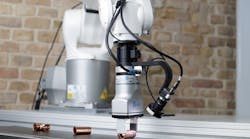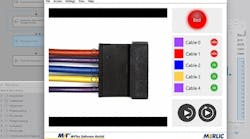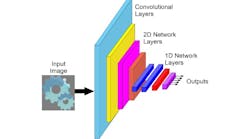Automotive manufacturing companies have a long history of investing in machine vision. Two decades ago, attempts to integrate vision systems into automotive parts production and final assembly resulted in decidedly mixed successes, with promises sometimes exceeding the ability of integrators to deliver fully functional systems.
In recent years, machine-vision hardware and software have become more user friendly, powerful, and standardized. Improved ease of installation and use has made such systems critical in every aspect of automotive manufacturing, from parts inspection and tracking to the vision-guided robotic assembly of vehicles.
Three articles by editor Andy Wilson in this issue illustrate the value of machine vision in automotive manufacturing. The first describes a vision-based robotic system that hems wheel housings to automotive bodies without the use of fiducials and with no calibration. The second shows how a global supplier of cast aluminum car wheels uses vision to inspect a variety of wheel types and sizes. Advances in pattern-recognition capabilities are also helping automotive manufacturers, as described in an article about neural network software that can determine whether correct tail-light assemblies have been placed on an automobile chassis.
Highly deployable
Automotive manufacturing is just one of numerous industries that have benefited from advances in machine vision. As our Product Focus article shows, smart cameras are becoming more popular among system integrators as manufacturers of these products leverage support of third-party software suppliers. This allows system developers to choose from multiple software packages and smart cameras, enabling developers to use the software with which they are most familiar.
Beyond automotive manufacturing, semiconductor and electronics industries are also embracing machine vision. As Xing-Fei He of Teledeyne DALSA and Frank Fang of Utechzone explain in an article, manufacturers of TFT LCD flat-panel displays—ubiquitous now but non-existent two decades ago—rely on banks of linescan cameras to enforce zero-defect policies. The article demonstrates that meeting consumer expectations for color quality can only be accomplished by using such machine-vision systems.
As many different industries have discovered over the years, the ever-evolving and improving technologies, products, and applications for machine vision and image processing offer both system integrators and OEMs alike the ability to deliver the quality of product demanded by end-users. Indeed, as the acceptance of the capabilities of these systems becomes more widespread, OEMs and systems integrators will find wider markets for their products and expertise.
W. Conard Holton, Editor in Chief
[email protected]
Vision Systems Articles Archives






